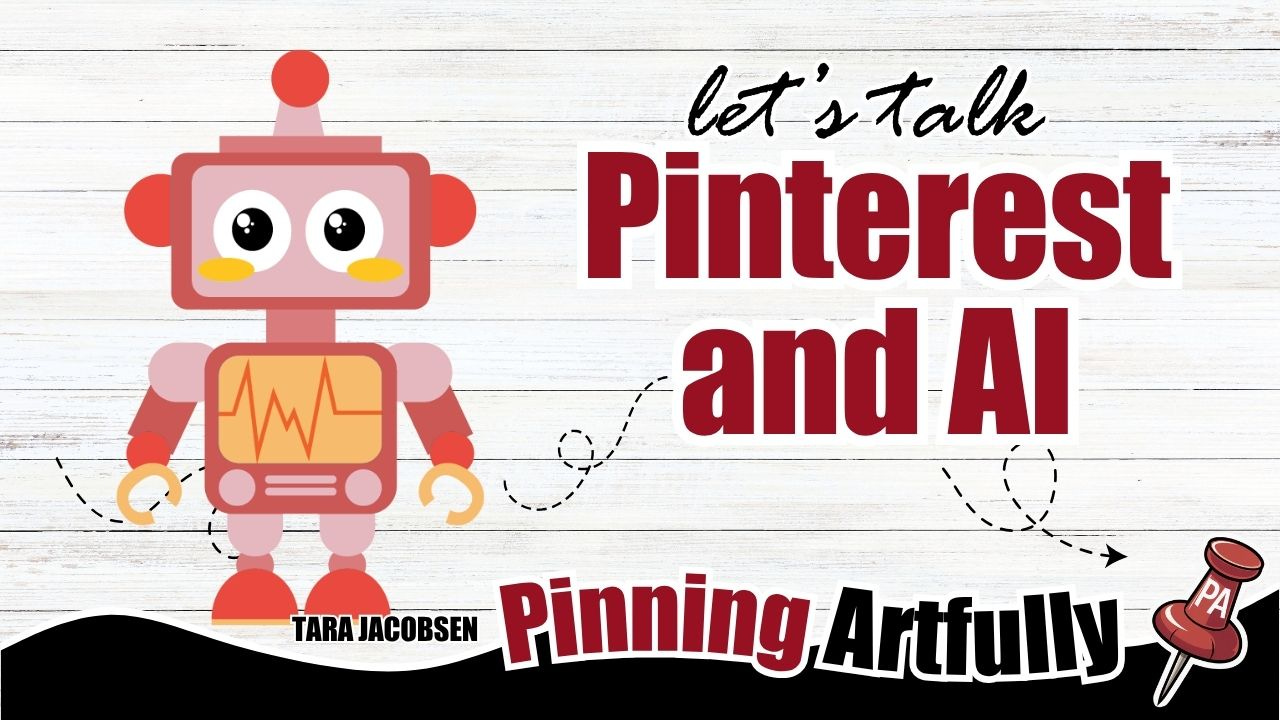Okay, let’s talk about something FUN and a little controversial… AI and Pinterest. Yep, I said it. The robots have entered the craft room - and no, they’re not here to steal your glue gun. They’re here to help!
If you’ve been wondering how to use AI with Pinterest without losing the human magic of your brand, pull up a chair. Here’s how I’m doing it (and how you can too), especially when it comes to images.
First, the Text Side of Things
I use AI all the time to write my Pinterest pin titles and descriptions. Here's the deal:
I do my keyword research first (because vibes don’t rank, keywords do)
Then I feed that list to AI to help turn “wood sign craft rustic vintage boho modern” into an actual sentence a human would want to click on!
It’s faster, smarter, and - bonus - sounds like I didn’t just copy-paste my SEO spreadsheet!
But TODAY, we’re talking about pictures. And oh, do I have thoughts.
AI for Pinterest Photos: Where I Stand
Let’s break this down by how real you want your content to be:
1. If You Shoot All Your Own Photos…
Like, you’re a food blogger or DIY queen and every picture on your site was taken by you? RESPECT!
For you, AI might not be the best fit right now. Why?
Your real-world pics have VALUE. Especially as AI images flood Pinterest, people are gonna crave what’s tangible.
That said, you could still use AI to brainstorm “what if” concepts or supplement posts where you didn’t get the perfect shot.
But honestly? Stick to what’s working. Your camera is your moneymaker.
2. If You Use Stock Photos Already (👋 Hello, It’s Me)
I've used stock photos for YEARS. I’m a craft blogger, but I don’t always take my own pics - especially when it comes to vintage collage, styled mockups, or blog headers.
So how do I use AI?
To create stock-style images: I use them just like I’d use a stock photo. Pop them into Canva, add text overlays, and boom - Pinterest pin ready!
To create “what if” visuals: Like dream craft rooms with big glass cabinets and cozy vibes. These are great for blog posts and pins that inspire and visualize possibilities.
To fill in the representation gap: I’m a heavier-set Hispanic woman in her 50s, and let me tell you - stock photo sites are NOT overflowing with people like me. AI lets me create diverse, inclusive images that reflect my audience.
So no, I’m not pretending everything is handmade and photographed by candlelight. I’m mixing AI with stock and Canva and real photos like a good ol’ Pinterest cocktail.
3. Amazon Affiliates? You Need to Read This!
This one’s a GAME-CHANGER.
If you’re an Amazon affiliate, you cannot legally use Amazon product photos in your pins. (Don’t shoot the messenger!)
But here’s what you can do:
Upload a product image to AI
Ask it to describe the item
Generate a similar-but-different image
Use that in your pins, link back to the real product in your blog post
Totally ethical. Super visual. And best of all? Keeps you compliant.
My Favorite AI Tool for Pinterest Pins
Let’s talk tools. I’ve tested a few, but when it comes to AI-generated pins with text, Ideogram is my ride-or-die.
Their text rendering is the cleanest I’ve seen (no melted letters or weird grammar)
I’ve had some pins go viral using only Ideogram - image, headline, everything
But even then, I don’t only use AI pins. I mix in:
Canva templates
Flat lays
Illustrations
And those dream AI rooms I mentioned earlier
Because I’m not trying to be a robot - I’m just using them to work smarter!
Bottom Line: AI Is a Tool, Not the Whole Toolbox
You don’t have to choose between handmade vs. AI. You don’t have to swear off stock photos or feel guilty that you didn’t shoot your blog pics on a DSLR.
What you do need is intention.
Use AI to:
Fill gaps (like inclusive imagery)
Save time on design
Inspire your creativity
Stay compliant with affiliate rules
But let your voice and vision stay human. That’s what your audience connects with!
Hopefully that helps!
XOXO
Tara
PS - So tell me: Have you dipped your toe into the AI Pinterest waters yet? What’s working? What’s weird? Let’s talk about it—drop a comment or hit reply!


